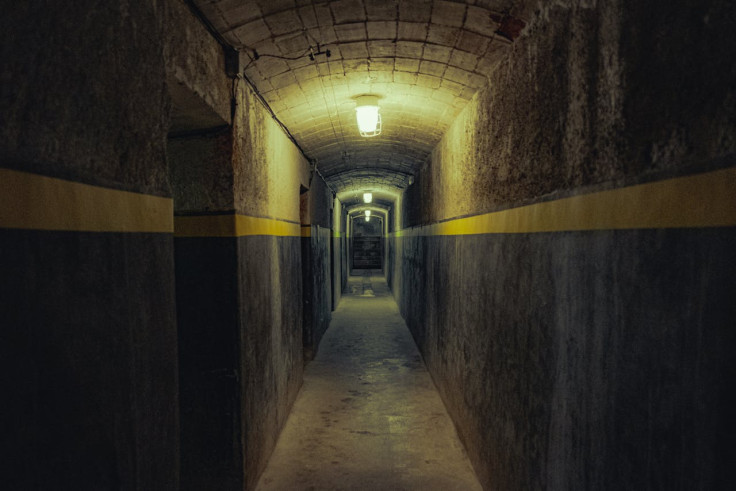World War III Fears Spark Rush for Doomsday Shelters: Mark Zuckerberg, Bill Gates Among Buyers
Super-rich buy luxury bunkers for doomsday fears

Billionaires like Mark Zuckerberg and Bill Gates are fueling a "buying frenzy" for luxury doomsday shelters, amid fears of global catastrophes. This trend is reminiscent of science fiction.
Cold War-era fears of nuclear war led to the construction of fortified bunkers, which are now transformed into luxurious "survival condos," featuring pools, entertainment systems, and spas. This radical overhaul is a major sign that there's a growing unease among the ultra-wealthy about potential global catastrophes.
A growing trend of apocalypse preparedness among the ultra-wealthy
Following in the footsteps of notable figures like Zuckerberg, who reportedly built a $100 (£78.16) million subterranean bunker on his Hawaiian estate, companies specialising in apocalypse preparedness are experiencing a surge in demand from the world's wealthiest individuals.
Ron Hubbard, CEO of Texas-based Atlas Survival Shelters, told the Hollywood Reporter, "World War III seems like it's coming." He attributes the recent surge in billionaire doomsday shelter purchases to the news of Mark Zuckerberg's Hawaiian bunker, calling it a "buying frenzy."
Inside The World's Largest Bomb Shelter Factory! 💣#bunker #bombshelter #underground #doomsdaybunker #doomsday #prepper #survival #ww3 #worldwar3 #fallout pic.twitter.com/cXOjXOyymo
— Atlas Survival Shelters (@AtlasShelters) March 10, 2024
In addition to being safe havens, these bunkers boast an impressive array of features, striking a perfect balance between luxury and security. In an interview with The Hollywood Reporter, Al Corbi, founder of Strategically Armored and Fortified Environments Inc. divulged details about one ongoing project, describing it as a fortress-like structure that resembles a medieval castle.
The building, which Corbi said is accessible only via a movable bridge, is surrounded by a moat filled with a flammable liquid that can be ignited to create a literal "ring of fire." Further enhancing the defence system of this structure are water cannons that are capable of downing aircraft. This structure houses flamethrowers.
Corbi noted that the structure has steel walls capable of sealing off the compound and a gassing system for extreme measures. As if that weren't enough, it includes various facilities such as mini-medical centres with operating tables and a slew of medications.
See original posting by James Melville:
— Thomas Kaczur (@KaczurThomas) January 8, 2024
Billionaires such as Mark Zuckerberg and Peter Thiel apparently building underground doomsday shelters.
Doomsday Shelter hit headlines after workers revealed they were required to sign NDAs.
Question: Do they know something the… pic.twitter.com/w2dC0ZD5rx
As expected, Zuckerberg's Hawaiian project has raised a few eyebrows. The word on the street is that the $270 (£211.03) million project includes a 5,000-square-foot underground shelter, self-sustaining energy and food supplies and luxury amenities like treehouses connected by rope bridges.
The uncertain future of doomsday shelters
This ambitious project reflects a growing trend among billionaires who are building their survival condos while global catastrophes loom. On the downside, these lavish shelters have triggered controversy and raised concerns about their impact on local communities and the environment.
Robert Vicino, founder of Del Mar, California-based Vivos, which creates underground survival shelters, agrees: "Now that Zuckerberg has let the cat out of the bag, that's got other people who share his status or are near his status starting to think, 'Oh God, if he's doing that, maybe he knows something that I don't, maybe I should seek this out myself.'
"But it's no secret that the one-percenters and top-ranking government officials have been in on this bunker idea for a long-ass time," Vicino noted.
These extreme measures are fueled by existential dread and a fierce desire for self-preservation. The ultra-rich circles often discuss topics revolving around maintaining control post-catastrophe by securing food supplies and deploying robots for protection and labour.
This highlights their deep anxiety about the future and their willingness to go to extraordinary lengths to safeguard their interests. Zuckerberg isn't alone in his doomsday preparations. Other notable billionaires like Kim Kardashian, Tom Cruise, Shaquille O'Neal and Gates are also rumoured to be prepping for the worst.
#Svalbard Global Seed Vault is a doomsday shelter for the food supply👍pic.twitter.com/K8XloAEccW
— 💙 #TechForGood 💙 (@Shi4Tech) February 19, 2024
By @IntEngineering #SDGs @CurieuxExplorer @jblefevre60 @Xbond49 @Nicochan33 @labordeolivier @bimedotcom @BetaMoroney @FrRonconi @EstelaMandela @drsharwood @AkwyZ @theomitsa @gvalan
Gates, in particular, reportedly has an apocalypse bunker discreetly hidden beneath each of his eight homes. However, the effectiveness of these shelters remains to be seen. In 2017, the Svalbard Global Seed Vault (often nicknamed the "Doomsday Vault") experienced minor flooding due to warmer-than-average temperatures.
Similarly, the unpredictability of future events raises questions. Doomsday prophecies throughout history, like the one predicting the world's end before 2021, have turned out to be unreliable. So, it is uncertain whether these shelters will provide true security in the face of unforeseen catastrophes.
© Copyright IBTimes 2024. All rights reserved.






